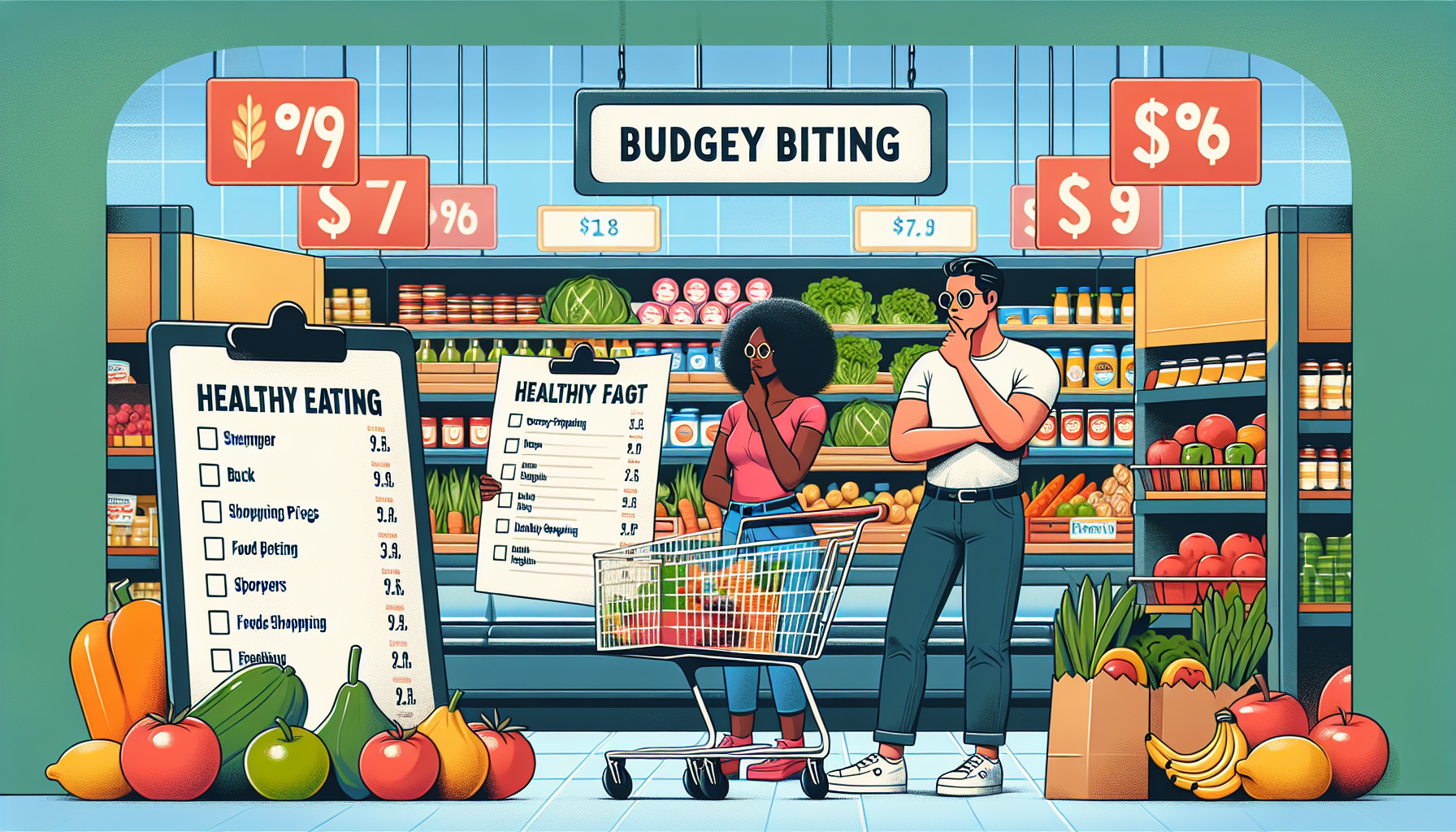Food
Budget Bites: How to Align Your Grocery Shopping with Healthy Eating Habits

Title: Mastering Grocery Shopping: Healthy Eating on a Budget Made Easy
If you’re like many of us, grocery shopping can feel like a battle between sticking to a budget and eating healthy. But fear not! With a few clever strategies, you can align your grocery shopping habits with a sound diet without breaking the bank. Dive in to discover how to enjoy nutritious meals while keeping your wallet happy!
Why Budget-Friendly Healthy Eating Matters
Before we delve into strategies, let’s chat about why healthy eating on a budget is so crucial. With rising food prices, maintaining a balanced diet without overspending is essential. According to the United States Department of Agriculture (USDA), the average American family spends about 10% of their income on food. Balancing health and cost-effective choices can lead to healthier lifestyles—and who doesn’t want that?
Making a Plan
Create a Weekly Meal Plan
Start by crafting a weekly meal plan. This should be your grocery shopping Bible! Not sure where to begin? Here are some steps:
- Choose Recipes: Pick recipes for breakfast, lunch, and dinner. Focus on those that use similar ingredients to save money and reduce waste.
- Research Sales: Check your local grocery store flyers for discounts on items you need.
- Prep for Snacking: Include healthy snacks like fruits, nuts, and yogurt to avoid impulse buys.
Craft Your Grocery List
Once you have a plan, it’s time to make a grocery list based on what you’ll need. Sticking to the list helps control spending and minimizes unnecessary purchases:
- Stick to the Perimeter: In most grocery stores, fresh produce, dairy, and meats line the perimeter. This is where you’ll find healthier options.
- Utilize Bulk Bins: Buying in bulk can save you significant cash, especially for grains, legumes, and nuts. Plus, it’s a great way to reduce packaging waste!
Smart Shopping Strategies
Implement Budgeting Techniques
- Set a Limit: Before you shop, decide on a budget and stick to it. Tools like budgeting apps can be super helpful!
- Use Coupons and Discounts: Before shopping, check for coupons in newspapers or online. Websites like Coupons.com or store apps often have exclusive savings.
Choose Seasonal Produce
Eating seasonally not only saves you money but also ensures you’re getting the freshest ingredients. Here’s a quick list of seasonal favorites:
- Spring: Strawberries, spinach, peas
- Summer: Tomatoes, cucumbers, cherries
- Fall: Apples, squash, pumpkins
- Winter: Citrus fruits, kale, potatoes
Cooking at Home
Embrace Meal Prep
Cooking at home is a game changer, both for your health and your budget with steps such as:
- Batch Cooking: Prepare larger portions of meals that can be stored for thrifty lunches and dinners throughout the week.
- Freezing Meals: Make double batches of your favorite meals and freeze the extras for those busy nights when cooking isn’t on your radar.
Simple, Healthy Recipes
Here’s a couple of easy-on-the-budget recipes to get you started:
- Veggie Stir-Fry: Use seasonal veggies and serve over rice or noodles.
- Chickpea Salad: Mix canned chickpeas (drained), chopped cucumber, tomatoes, olive oil, and a squeeze of lemon. It’s protein-packed and perfect for lunches!
The Importance of Smart Storage
Keep Food Fresh Longer
Proper storage can also help you save money. Here are some tips to avoid spoilage:
- Store Produce Correctly: Some fruits and veggies do better in the fridge while others should stay on your countertop—research which is which!
- Use Air-tight Containers: For grains, cereals, and leftovers, air-tight containers can help maintain freshness and prevent waste.
Resources and Tools
Here are a few helpful resources to keep you informed on healthy eating:
- USDA’s MyPlate: This tool helps illustrate balanced meals and portion sizes (My Plate)
- ChooseMyPlate.gov: Offers recipes and meal planning tips.
Staying Motivated
Follow Health and Food Blogs
Immerse yourself in healthy living. There are tons of blogs and resources dedicated to budget-friendly recipes. Check out websites such as EatingWell.com for ideas that won’t hurt your pocket.
Join Community Groups
Consider joining local groups or online forums focused on healthy eating on a budget. You’ll get tips, tricks, and camaraderie from others on the same journey.
Conclusion: Healthy Eating Doesn’t Have to Break the Bank
By aligning your grocery shopping habits with affordable, healthy eating practices, you’re setting yourself up for success. Remember: meal planning, making smart shopping choices, and being creative in the kitchen can transform your diet while keeping your bank account happy.
So, next time you hit the grocery store, remember these tips! It’s not just about what you buy; it’s about how you plan and prepare. Happy shopping!
For more tips on healthy eating and budgeting, check out our Healthy Eating section! And don’t forget to look into our Budget-Friendly Recipes for more delightful meals to try!
-

 News23 hours ago
News23 hours agoTeenage US Citizen Records Brutal Arrest by Immigration Agents Who Told Him, ‘You Have No Rights’
-
News22 hours ago
Maltese Police Officers Participate in Operation in the Black Sea
-

 Business22 hours ago
Business22 hours agoNavigating the Economic Landscape: Key Insights from Today’s Business Headlines
-

 News21 hours ago
News21 hours ago“Honoring Ukraine: A Tribute” (July 26, 2025) — dynamo.kiev.ua
-

 Entertainment22 hours ago
Entertainment22 hours agoCinematic Success: Fun Facts About Movies That Shaped the Film Industry
-

 Business19 hours ago
Business19 hours agoThe Top 10 Business Opportunities to Watch in 2025
-

 Business21 hours ago
Business21 hours agoNavigating the Shifting Sands: Key Global Economic Trends for 2024
-

 News20 hours ago
News20 hours agoEnviMin Showcases Vacaresti Natural Park to Her German Counterpart
